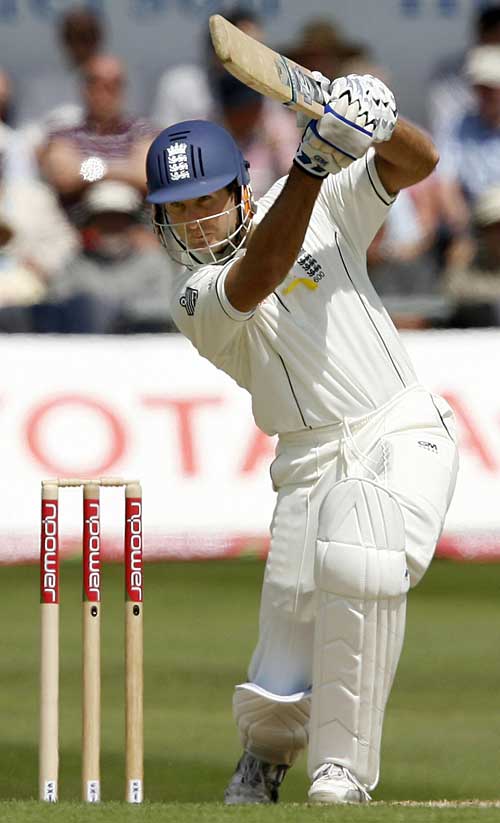A question of numbers
|
|

|
It's one of the most frequent queries posed to Wisden and our website, Cricinfo: "What do the numbers on the players' shirts mean?" The digits in question are the little figures near the badge on the Test shirt, not the big ones on the back of the one-day version. And the answer is that the numbers denote the player's place in history: Michael Vaughan's "600", for example, shows that he was the 600th man to represent England in a Test. Separate numbers apply for one-day internationals: in those, Vaughan is No. 161.
This instant tradition began in Australia, the brainchild of the history-minded Steve Waugh (Test match No. 335 to his twin Mark's 349), soon after he took over as Test captain in 1999, although the numbers first appeared on the tight yellow Aussie one-day caps rather than the baggy green ones or the shirts (England were the first to do that, in 2001). Waugh explained at the time: "Not only do we embrace tradition, but we feel an obligation to set new ones to hand on to coming generations."
England soon followed suit, and now New Zealand, Pakistan and Sri Lanka do it too (as do South Africa, but only dating back to readmission in 1991). When two or more players make their debut in the same game, the numbers are awarded in alphabetical order. Vaughan only wears that satisfyingly round 600 because he was the third of three debutants at Johannesburg in November 1999: Chris Adams was 598 and Gavin Hamilton 599. When Adams joined Vaughan at the crease, however, they were more worried about the numbers on the scoreboard, which read two for four.
The alphabetical rule escaped Michael Slater, who noted that 355 men had preceded him for Australia: he purchased personalised number-plates for his Ferrari and had himself tattooed with the number 356. Only later did he find out that he was actually No. 357, as Brendon Julian also made his debut at Manchester in 1993, and beat him alphabetically. Fortunately for Slater, the Australian board and Julian agreed that they could exchange numbers.
The numbers are backdated to the inaugural Test of 1876-77, which makes Tom Armitage of Yorkshire - who varied his medium-pace bowling with occasional underarm lobs - England's No. 1. Australia's, appropriately enough, is Charles Bannerman, the scorer of Test cricket's first run, and its first century.

